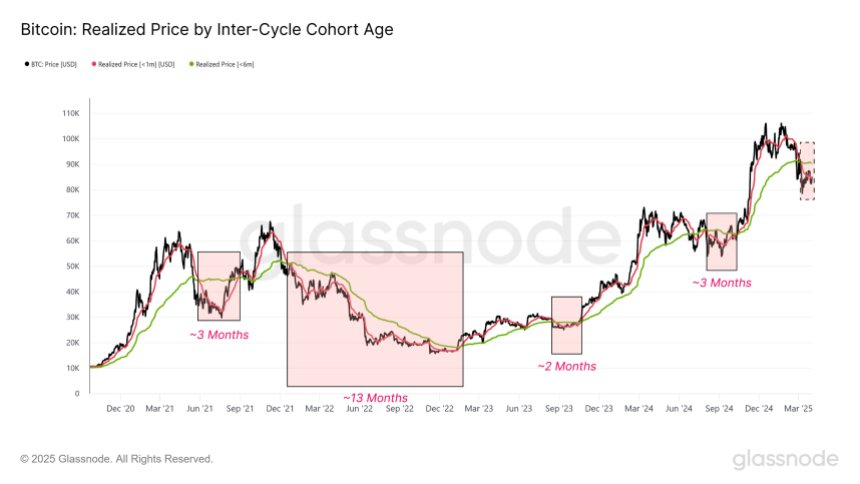Reason to trust

How Our News is Made
Strict editorial policy that focuses on accuracy, relevance, and impartiality
Ad discliamer
Morbi pretium leo et nisl aliquam mollis. Quisque arcu lorem, ultricies quis pellentesque nec, ullamcorper eu odio.
Bitcoin (BTC) and other cryptocurrencies faced significant selling pressure on Thursday following President Donald Trump’s announcement of sweeping tariffs, which sent shockwaves through the stock market.
Bitcoin Performance Tied To Global Liquidity
Bitcoin, the market’s leading cryptocurrency, was down 5% following the announcement, while Ethereum (ETH) dropped 6%, and Solana (SOL) fell 11%. The broader financial market reacted sharply, with the S&P 500 experiencing its largest single-day loss since 2020.
Notably, shares of major crypto firms like Coinbase (COIN) and Strategy (previously Microstrategy) slipped by approximately 7% and 10%, respectively, with President Trump’s tariff announcement.
According to CNBC, the newly implemented tariffs, set at a minimum of 10% with potentially higher rates for some countries, have heightened fears of an escalating global trade war.
Ben Kurland, CEO of crypto research platform DYOR, noted that Bitcoin is currently behaving like a high-beta asset, closely tracking real yields, interest rate expectations, and the strength of the US dollar.
“Yields pulled back, risk assets caught a bid, and Bitcoin responded instantly,” Kurland commented. “It’s not about crypto fundamentals today; it’s about global liquidity signals and positioning. When real rates dip and the dollar softens, Bitcoin breathes.”
Bearish Signals Emerge
Despite the turmoil, Bitcoin has managed to maintain its position within the $80,000 to $90,000 range over the past month. This stability comes as investors look to equities for cues, given the absence of any significant crypto-specific catalysts.
David Hernandez, a crypto investment specialist at 21Shares, pointed out that Bitcoin’s ability to hold above key technical support levels signals robust underlying demand. Hernandez explained:
Although the tariff rates were slightly higher than expectations, the announcement provided much-needed clarity on the scope and scale of the policy. Markets thrive on certainty, and with speculation largely removed, institutional investors may see an opportunity to take advantage of compressed valuations in the coming days.
However, challenges remain for Bitcoin, as market intelligence firm Glassnode has identified a concerning trend in a recent social media post on X (formerly Twitter).

According to the firm, an on-chain analogue to the “Death Cross” has emerged, where the 30-day volume-weighted price of Bitcoin has fallen below the 180-day average.
This indicator suggests weakening momentum and has historically preceded bearish trends lasting 3 to 6 months. This would mean further price drops and subsequent consolidation as seen in the current market conditions.
As of now, the leading cryptocurrency trades at $83,270, recording losses of over 3% in the monthly time frame. However, on a year-to-date basis, BTC still reflects gains of 20% for investors.
Featured image from DALL-E, chart from TradingView.com



















